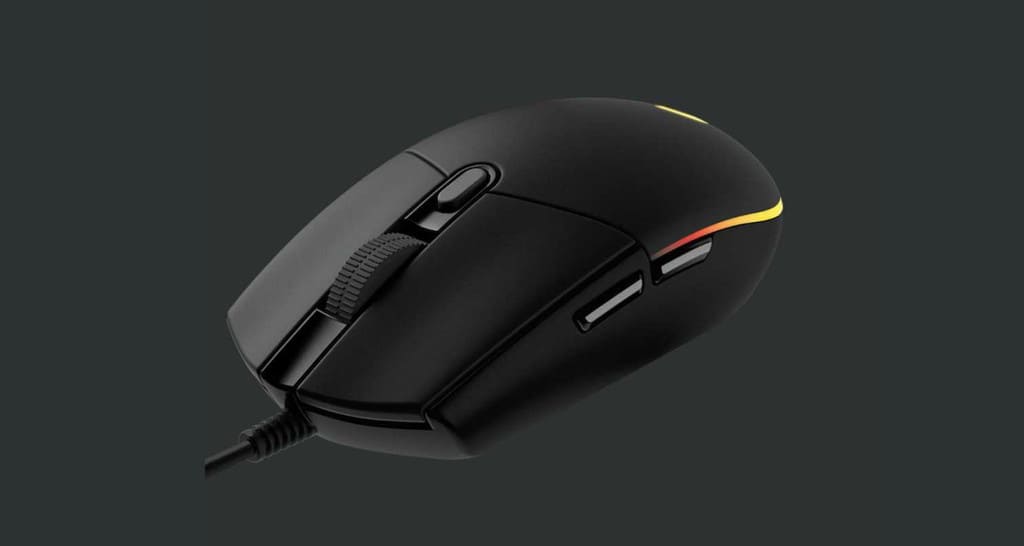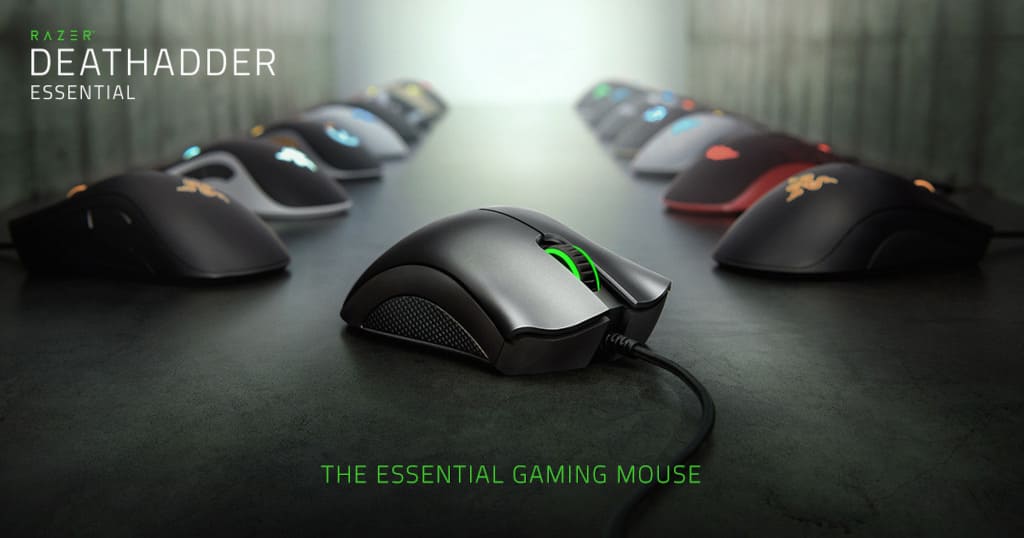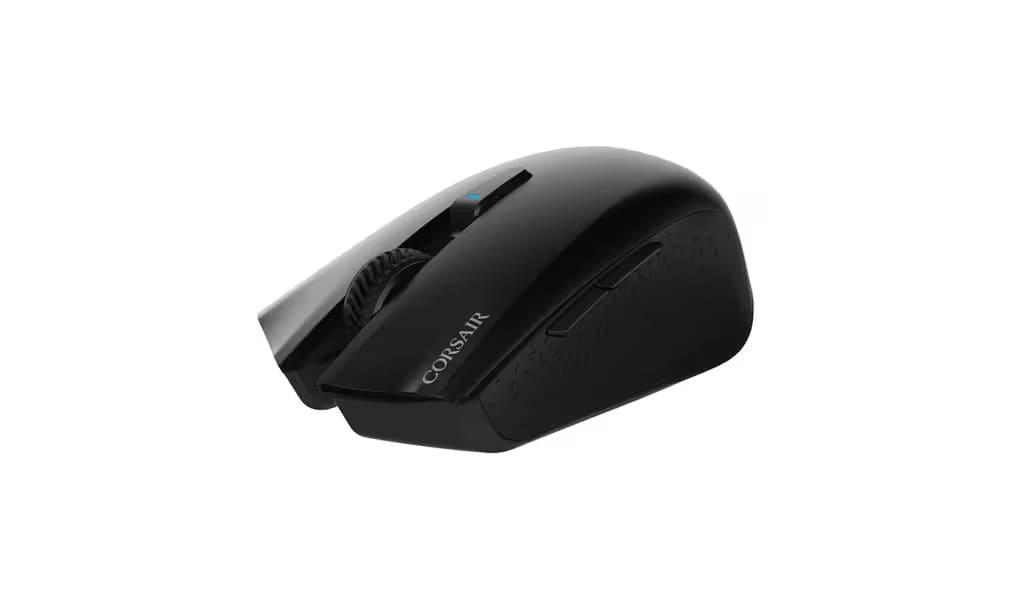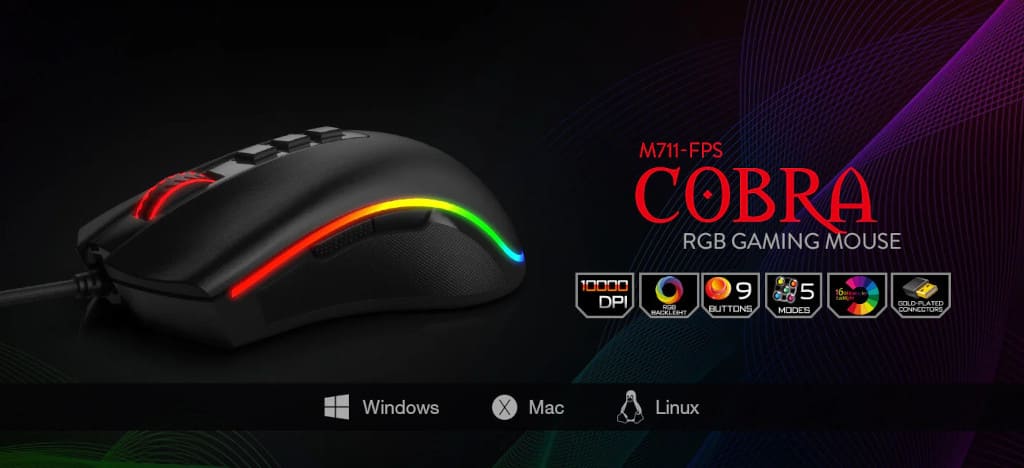In this article:
- Why Budget Gaming Mice Deserve More Credit
- What to Look for in a Budget Gaming Mouse
- Top 5 Budget Gaming Mice (2025 Picks)
- Comparison Table: Best Budget Gaming Mice 2025
- Conclusion: Finding the Perfect Budget Gaming Mouse
Why Budget Gaming Mice Deserve More Credit
In the world of gaming, it’s easy to get swept up in the hype around $100+ gaming mice loaded with futuristic sensors, customizable weights, and endless RGB lighting. But here’s the truth most gamers don’t realize: you don’t need to spend a fortune to get a mouse that delivers precision, comfort, and reliability for hours of gaming.
For many players—whether you’re grinding ranked matches in Valorant, raiding in World of Warcraft, or just enjoying a casual session of Minecraft—a solid budget gaming mouse can perform nearly as well as its premium counterparts. In fact, some of today’s top budget models use the same sensors and switches as higher-end mice, meaning you’re paying less without sacrificing performance where it matters most.
And let’s be real: not every gamer is an eSports pro with a sponsorship deal. Students, casual gamers, and even competitive players on a budget all need gear that balances quality and affordability. That’s why this guide focuses on the Top 5 Budget Gaming Mice in 2025—options that prove you can get speed, accuracy, and comfort without breaking the bank.
Why Budget Doesn’t Mean “Cheap” Anymore
In the past, “budget gaming mouse” often meant flimsy plastic, laggy sensors, and click switches that wore out within months. Fast forward to 2025, and the game has changed. Brands like Logitech, Razer, and SteelSeries now compete in the budget segment with surprisingly robust offerings. Even up-and-coming brands like Redragon and Cooler Master are challenging the big players by delivering impressive build quality at wallet-friendly prices.
Today, many budget mice feature:
- High DPI optical sensors (up to 8,000–12,000 DPI, which is more than enough for most gamers).
- Durable switches rated for 20–50 million clicks.
- Lightweight builds designed for speed and long play sessions.
- Wired and wireless options with low-latency performance.
- Customizable RGB lighting for that gamer aesthetic.
Who This Guide Is For
This article is for you if:
- You’re a casual gamer who doesn’t want to overspend but still craves responsive gear.
- You’re a student or budget-conscious player building a setup without draining your wallet.
- You’re a competitive beginner looking for performance without premium pricing.
- Or, you just need a reliable backup mouse that won’t let you down.
By the end of this guide, you’ll know exactly which budget gaming mouse suits your playstyle, whether you prioritize lightning-fast clicks, ergonomic comfort, wireless freedom, or just a great all-rounder at an unbeatable price.
So let’s dive in and break down what actually matters when choosing the best budget gaming mouse.
What to Look for in a Budget Gaming Mouse
Before jumping into the top budget gaming mice of 2025, it’s important to know what makes a good gaming mouse—and more specifically, what separates a $25 mouse from a $75 one. While marketing buzzwords like “ultra-speed” or “next-gen RGB” sound flashy, the real difference lies in a few key factors. Here’s what you should keep in mind when shopping for a budget-friendly gaming mouse:
1. DPI (Dots Per Inch) & Sensor Quality
DPI measures how sensitive your mouse is. A higher DPI means the cursor moves further with less physical movement of the mouse. While some premium models boast 20,000+ DPI, the truth is most gamers rarely go beyond 4,000–6,000 DPI.
For budget gamers, an accurate sensor matters more than sky-high DPI numbers. Look for:
- Optical sensors instead of older laser ones (optical = more accurate).
- Adjustable DPI settings (so you can switch between fast movements in FPS and slower precision for sniping or design work).
- Low input lag for competitive responsiveness.
2. Ergonomics & Comfort
You’ll be holding this mouse for hours, so comfort is non-negotiable. Budget doesn’t mean you should settle for cramped designs or sharp edges.
Consider:
- Grip style compatibility: palm, claw, or fingertip.
- Hand size fit: some mice are smaller/lighter for portability, others bulkier for comfort.
- Weight: lightweight mice (~60–70g) are great for FPS, while heavier mice may feel better for MMO/strategy games.
3. Build Quality & Durability
A common worry with budget gear is how long it will last. But many of today’s affordable gaming mice use switches rated for 20–50 million clicks—plenty of lifespan even for hardcore players.
Check for:
- Sturdy plastic or hybrid shell (not thin, creaky materials).
- Reliable switches (Omron switches are common in both budget and premium models).
- Braided or reinforced cables (if wired) to prevent fraying.
4. Wired vs. Wireless
In the past, wireless mice were avoided by budget-conscious gamers due to lag and poor battery life. Now, even budget wireless mice offer low-latency performance that rivals wired models.
- Wired pros: cheaper, lighter, no charging hassle.
- Wireless pros: freedom of movement, cleaner desk setup, often rechargeable.
- Wireless cons (at budget level): slightly heavier, occasional connection issues, battery replacement in ultra-cheap models.
5. Extra Buttons & Customization
Extra buttons aren’t just for MMO grinders—they’re useful for everything from push-to-talk in Discord to assigning macros in FPS games.
Look for:
- At least two programmable side buttons (standard on most budget mice).
- DPI switch button (handy for on-the-fly sensitivity adjustments).
- RGB lighting control (optional, but let’s be honest—gaming gear just looks better glowing).
6. Software & Driver Support
The best gaming mouse in the world feels incomplete without good software. Budget mice often skimp here, but some brands still shine.
Good software lets you:
- Remap buttons.
- Create gaming profiles.
- Adjust DPI presets.
- Sync RGB lighting with your keyboard/headset.
Pro tip: stick with brands that update their drivers regularly. A budget mouse with outdated, clunky software can be frustrating.
✅ With these criteria in mind, you’ll be able to judge whether a budget gaming mouse is actually a good deal—or just a cheap compromise. The good news? Many of the models we’re about to cover score surprisingly high in all these areas, despite their wallet-friendly prices.
Top 5 Budget Gaming Mice (2025 Picks)
1. Logitech G203 Lightsync

If there’s one mouse that consistently dominates the budget gaming scene, it’s the Logitech G203 Lightsync. Priced around $30–40, this mouse is proof that you don’t have to spend big to get a dependable, high-performing gaming companion.
Key Specs:
- Sensor: Logitech Mercury sensor (up to 8,000 DPI)
- Weight: 85g
- Buttons: 6 programmable
- Connectivity: Wired (USB)
- Lighting: RGB Lightsync, customizable via Logitech G HUB
- Switches: Rated for 10–20 million clicks
Why It’s Great
The G203 is often called the gateway gaming mouse—it’s simple, affordable, and surprisingly powerful for its price. The 8,000 DPI sensor may not sound as flashy as 20K+ sensors on $100+ mice, but in real-world use, it’s more than enough for FPS, MOBA, and general productivity. Logitech’s Mercury sensor is accurate, consistent, and delivers minimal latency, making it a great pick for competitive beginners.
Another big win here is ergonomics. While it’s not the lightest mouse on the market, its 85g weight strikes a nice balance between stability and speed. It’s comfortable for both palm and claw grip users, though people with larger hands might find it a bit small for extended sessions.
The RGB Lightsync is also a fun bonus—you can sync it with your Logitech keyboard or headset, or just let it cycle through colors for that gamer aesthetic.
Pros:
- Affordable price without major compromises
- Solid and reliable Mercury sensor
- Comfortable, lightweight design
- RGB customization via Logitech G HUB
- Durable build for long-term use
Cons:
- Wired only (no wireless option)
- Smaller size may not suit large hands
- Cable isn’t braided (but still durable)
Best For:
Gamers on a budget who want a no-nonsense, reliable, all-around mouse that performs well in most genres. Ideal for casual to semi-competitive players.
2. Razer DeathAdder Essential

The Razer DeathAdder is one of the most iconic gaming mice of all time. The Essential version trims down the premium features but keeps the legendary ergonomic shape and reliable performance—at a wallet-friendly price of $25–35.
Key Specs:
- Sensor: Razer Optical sensor (up to 6,400 DPI)
- Weight: 96g
- Buttons: 5 programmable
- Connectivity: Wired (USB)
- Lighting: Single green backlight (classic Razer glow)
- Switches: Razer mechanical switches rated for 10 million clicks
Why It’s Great
The DeathAdder’s biggest strength has always been its ergonomic design. If you’ve got medium to large hands and prefer a palm grip, this mouse feels like it was molded to fit your hand perfectly. Even after hours of gaming, fatigue is minimal thanks to its comfortable curves.
Performance-wise, the 6,400 DPI sensor is precise and consistent—plenty for FPS, MOBAs, or MMOs. While it doesn’t have the insane DPI numbers of high-end mice, most gamers never go above 3,200 DPI anyway, so it’s more than enough.
The Essential version strips back premium extras like RGB customization or ultra-lightweight shells, but what you get instead is a rock-solid, reliable mouse that just works. It’s a great entry point for anyone curious about Razer’s gear without spending $70+.
Pros:
- Legendary ergonomic design (perfect for palm grip)
- Solid and accurate optical sensor
- Affordable entry into the Razer ecosystem
- Durable switches and strong build quality
- Comfortable for long gaming sessions
Cons:
- Heavier than other budget mice (~96g)
- Limited lighting (green only, no full RGB)
- Software (Razer Synapse) can feel heavy for such a simple mouse
Best For:
Gamers who value comfort and ergonomics above all else. Especially good for players with medium to large hands who play long sessions and want a budget mouse that won’t leave their wrist aching.
3. SteelSeries Rival 3

SteelSeries has built a reputation for premium esports gear, but with the Rival 3, they managed to bring that same competitive DNA into a budget-friendly package—usually priced around $30–40.
Key Specs:
- Sensor: TrueMove Core Optical Sensor (up to 8,500 DPI)
- Weight: 77g (lightweight)
- Buttons: 6 programmable
- Connectivity: Wired (USB)
- Lighting: 3-zone RGB with Prism lighting
- Switches: Mechanical switches rated for 60 million clicks
Why It’s Great
The Rival 3 punches well above its price point, especially with its TrueMove Core sensor, developed in collaboration with PixArt. It’s accurate, responsive, and tracks 1:1—meaning every small movement of your hand is mirrored precisely on-screen. That’s a huge advantage in competitive FPS games.
At 77g, it’s one of the lightest budget gaming mice available, which makes it fantastic for fast-paced shooters like Valorant, Apex Legends, or CS2. Despite its lightweight build, SteelSeries didn’t cut corners on durability—the switches are rated for a massive 60 million clicks (higher than some premium mice).
The design is simple but clean, with three-zone RGB lighting that can be customized via SteelSeries Engine software. The matte finish is comfortable to grip and resists fingerprints surprisingly well.
Pros:
- Excellent TrueMove Core sensor (1:1 tracking accuracy)
- Lightweight (77g) for quick flicks and fast gameplay
- Long-lasting switches (60 million clicks)
- Sleek design with customizable RGB
- Great for competitive shooters
Cons:
- Smaller size—not ideal for very large hands
- Cable is rubber (braided would’ve been nicer)
- Software setup can feel a bit heavy for beginners
Best For:
Competitive gamers who want a lightweight, esports-grade mouse without spending $70+. Perfect for FPS players who prioritize speed, accuracy, and endurance.
4. Corsair Harpoon RGB Wireless

Wireless gaming mice used to cost a fortune, but the Corsair Harpoon RGB Wireless flipped the script. For around $40–50, it delivers lag-free wireless performance with impressive battery life—making it one of the best budget wireless gaming mice in 2025.
Key Specs:
- Sensor: PMW3325 Optical Sensor (up to 10,000 DPI)
- Weight: 99g
- Buttons: 6 programmable
- Connectivity: Wireless (Slipstream 2.4GHz / Bluetooth) + Wired USB
- Lighting: Single-zone RGB (Corsair iCUE software)
- Battery Life: Up to 60 hours (Bluetooth), 30+ hours (2.4GHz)
- Switches: Omron switches rated for 20 million clicks
Why It’s Great
The Harpoon RGB Wireless is all about freedom without compromise. Using Corsair’s Slipstream wireless tech, latency is nearly indistinguishable from wired mice—a must for competitive players. Plus, if you’re running low on juice mid-game, you can just plug in the USB cable and keep going.
Its 10,000 DPI sensor is more than enough for most genres, from high-speed FPS to precise RTS movements. And with Bluetooth mode, you can connect it to laptops, tablets, or even mobile devices, making it a versatile pick for gamers who are always on the move.
At 99g, it’s not the lightest, but the ergonomic shape makes it comfortable for long sessions. The simple RGB adds a little gamer flair without killing battery life.
Pros:
- Wireless freedom with near-zero latency
- Dual connectivity (2.4GHz + Bluetooth + wired)
- Strong battery life (up to 60 hours)
- Solid performance sensor (10,000 DPI)
- Comfortable design for all grip styles
Cons:
- Slightly heavier than wired-only budget mice
- RGB lighting limited to single-zone
- iCUE software can be resource-heavy
Best For:
Gamers who want a budget-friendly wireless option that doesn’t feel like a downgrade. Great for players who game across multiple devices (PC, laptop, tablet) and want one mouse that does it all
5. Redragon M711 Cobra

If you want maximum features for minimum cash, the Redragon M711 Cobra is one of the best-value budget gaming mice out there. Priced around $20–25, it’s proof that you can get great performance and flashy features without breaking the bank.
Key Specs:
- Sensor: PixArt 3360 Optical Sensor (up to 10,000 DPI)
- Weight: 105g
- Buttons: 7 programmable
- Connectivity: Wired (USB)
- Lighting: Fully customizable RGB (16.8 million colors)
- Switches: Rated for 20 million clicks
Why It’s Great
The M711 Cobra often gets called the “budget G502” because of how many features it packs for such a low price. The PixArt 3360 sensor delivers accurate tracking and smooth responsiveness, putting it on par with mice that cost double.
Where it really stands out is customization. With 7 programmable buttons and full RGB lighting, you can tweak both function and style to your heart’s content. The mouse software lets you save profiles, macros, and DPI presets—something rare in this price tier.
It’s a little heavier than the ultralight competition at 105g, but for players who prefer a solid, stable feel, that weight adds confidence. The ergonomic design fits most hand sizes, though smaller-handed gamers might find it chunky.
Pros:
- Incredible value for the price (~$20–25)
- Accurate PixArt 3360 sensor
- Tons of RGB customization options
- 7 programmable buttons (great for MMOs & productivity)
- Durable and reliable build
Cons:
- Heavier than most budget mice (105g)
- Software can feel clunky compared to bigger brands
- Cable isn’t the most flexible
Best For:
Gamers who want the most features for the lowest price. Perfect for those who love customization, macros, and flashy RGB without spending more than $25.
Comparison Table: Best Budget Gaming Mice 2025
| Mouse | Price Range | Weight | Sensor | DPI Range | Connectivity | Buttons | RGB Lighting | Best For |
|---|---|---|---|---|---|---|---|---|
| Logitech G203 Lightsync | $25–35 | 85g | Mercury Sensor | Up to 8,000 | Wired (USB) | 6 | Yes (Lightsync) | Beginners, all-round gaming |
| Razer DeathAdder Essential | $25–35 | 96g | Razer Optical | Up to 6,400 | Wired (USB) | 5 | Green only | Comfort & palm grip users |
| SteelSeries Rival 3 | $30–40 | 77g | TrueMove Core | Up to 8,500 | Wired (USB) | 6 | 3-zone RGB | Competitive FPS |
| Corsair Harpoon RGB Wireless | $40–50 | 99g | PMW3325 Optical | Up to 10,000 | Wireless (2.4GHz/Bluetooth) + Wired | 6 | Single-zone RGB | Budget wireless & multi-device users |
| Redragon M711 Cobra | $20–25 | 105g | PixArt 3360 Optical | Up to 10,000 | Wired (USB) | 7 | Full RGB | Feature-packed value pick |
Conclusion: Finding the Perfect Budget Gaming Mouse
Choosing a gaming mouse doesn’t have to drain your wallet. As we’ve seen, today’s budget-friendly options deliver excellent sensors, solid build quality, and even RGB customization—features that used to be locked behind $70+ price tags.
If you’re still on the fence, here are some quick recommendations:
- 🏆 Best All-Rounder: Logitech G203 Lightsync – reliable, affordable, and beginner-friendly.
- 🎯 Best for Comfort: Razer DeathAdder Essential – ergonomic design perfect for long sessions.
- ⚡ Best for Competitive FPS: SteelSeries Rival 3 – lightweight with 1:1 tracking accuracy.
- 📡 Best Wireless Option: Corsair Harpoon RGB Wireless – versatile with great battery life.
- 💸 Best Value Pick: Redragon M711 Cobra – tons of features and RGB at an unbeatable price.
Ultimately, the right mouse comes down to your playstyle, grip preference, and budget. Whether you’re grinding ranked matches in Valorant, diving into RPG adventures, or just want a reliable mouse for both gaming and work, one of these five picks will give you maximum performance without breaking the bank.
So before you drop big money on a flashy high-end model, consider one of these budget kings—you might be surprised at how much power and precision you can get for under $50.